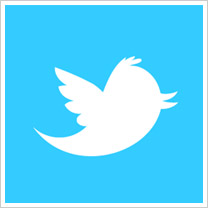By Mikal E. Belicove|For Entrepreneur.com|March 31, 2011
You’ve heard the idiom about the squeaky wheel getting the grease. It turns out the most frequent squawkers on Twitter — while small in number — generate the most tweets, according to research presented this week at the 20th annual International World Wide Web Conference in Hyderabad, India.
 The 10-page study, called Who Says What to Whom on Twitter, is a joint project from Cornell University and Yahoo! Research. Foremost among its findings is a factoid that shows about 50 percent of all tweets are generated by a paltry 20,000 users. To be more specific, that means less than 0.05 percent of all Twitter aficionados attract nearly half of all the attention on the popular social broadcasting service.
The 10-page study, called Who Says What to Whom on Twitter, is a joint project from Cornell University and Yahoo! Research. Foremost among its findings is a factoid that shows about 50 percent of all tweets are generated by a paltry 20,000 users. To be more specific, that means less than 0.05 percent of all Twitter aficionados attract nearly half of all the attention on the popular social broadcasting service.
These 20,000 tweeters who rope in such a large percentage of the billion or so tweets produced each week are defined in the study as “elite users,” and they fall into the categories of media, celebrities, organizations and bloggers. The rest are shoved unceremoniously into the category of “ordinary users.”
Into the celebrity category go such notables like Barack Obama, Lady Gaga and Lance Armstrong. The media includes CNN and the New York Times. Organizations range fromAmnesty International to Whole Foods, and blogs run the gamut from our Entrepreneur’s ownChris Brogan to Daily Blog Tips’ Daniel Scocco.
Of those, the study’s analysts determined that the media produces the most information shared, but it’s the celebrities who are the most followed by Twitter users. “Within this population of elite users, attention is homophilous,” the report says. In simpler words, similarity breeds connection. Celebrities follow celebrities on Twitter, media follows media and bloggers follow bloggers.
None of this of course is very surprising to me, as I find most of what happens through Twitter to be little more than bellybutton gazing, and this study seems to…
Continue reading Because 20,000 Users Produce 50% of all Tweets